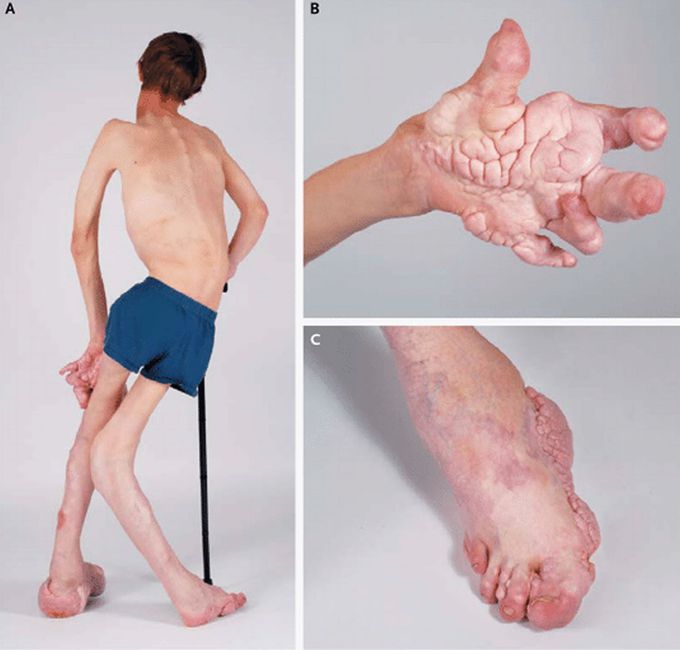


Proteus Syndrome
Proteus syndrome is an extremely rare genetic condition in which there is excessive overgrowth of various tissues of the body. This includes bones, skin, connective and fatty tissue and even internal organs like the spleen and thymus. The overgrowth is disproportionate and asymmetric and can cause different clinical features in different individuals. The common features include overgrowth of limbs, digits and skull, scoliosis and a “hunched-over” appearance. Moreover, abnormal skin growth can cause formation of epidermal naevi and local growth of fat can cause formation of lipomas. Blood and lymphatic vessels can also undergo overgrowth leading to vascular lesions like port wine stains or lymphatic malformations. The common facial features include a prominent occiput, drooping eyelids, low nasal bridge, wide, upturned nostrils with a long, narrow face and an open mouth at rest. Unfortunately, this disease does not have a specific treatment and it mainly focuses on symptomatic relief. Hence, a multidisciplinary team of doctors is required to manage these patients including specialists such as a cardiologist, a neurosurgeon, an orthopaedist, a craniofacial surgeon etc. Source: dermnetnz.org

